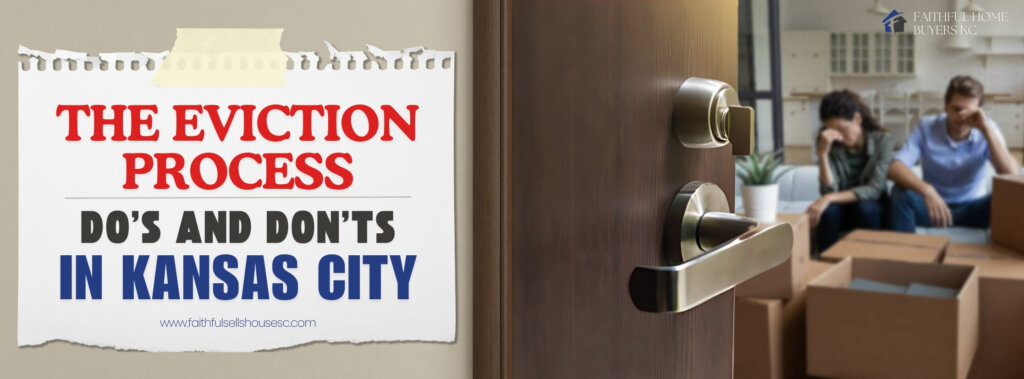As a landlord, navigating the eviction process is an eventual reality you may face. It’s never an easy experience, for you or the tenant. While challenges may arise, there are ways to prepare for a smoother process. Here are some important do’s and don’ts to help guide you through it.

What You Should Do:
Don’t Ever:
- Do not attempt to physically remove the tenant or their belongings without a court order. Follow the legal procedures to ensure their removal is handled properly.
- Change the locks. This can come back to bite you. The tenant could use this against you in court, which may lead to losing the case and potentially costing you thousands of dollars.
- Legally, you cannot shut off utilities in someone else’s name, even if it’s your property. As with other actions, it’s essential to follow the proper legal procedures.
- Don’t ever take matters into your own hands. Threatening, intimidating, or harassing the tenant in any way can severely harm your case.
- In most cases, you cannot retain the deposit as payment for overdue rent. Return the deposit owed, subtracting any damages, and resolve the remaining issues through the court of law.
- If a tenant leaves, be cautious about disposing of any items left behind. Many states have regulations concerning notice and storage. They must be notified about the belongings and what you intend to do with them after a certain date.
Typical Process & Timeframe:
Effective Eviction: In this scenario, the landlord initiates eviction for a valid reason. The tenant will initially receive either a “pay rent or quit” notice, a “cure or quit” notice, or an “unconditional quit” notice. These notices communicate the options clearly: pay rent, address the issue promptly, or vacate the premises. By clearly communicating these choices, landlords can ensure that the eviction process is fair, transparent, and legally sound. If the tenant does not comply with the notice, the landlord can proceed with the necessary legal actions to regain possession of the property
Process Without Cause: If you need to terminate a lease without cause, typically a 30 or 60-day notice is required for the tenant. This situation can arise if you plan to occupy the property yourself or for similar reasons.
Even after obtaining a favorable court ruling, dealing with a non-compliant tenant can be challenging. In such cases, reaching out to the state marshall to enforce the eviction might be necessary to physically remove the tenant from the property.
30-Day Notice: This is often required when the tenant has been residing in the property for a short period or if local laws specify that a shorter notice period is appropriate. A 30-day notice gives the tenant sufficient time to find alternative housing and prepare to move out.
60-Day Notice: For tenants who have been in the property for a longer period, such as a year or more, some states or cities require a longer notice period, typically 60 days. This longer timeframe allows the tenant more time to secure a new place to live and make arrangements for their move.
Important: The information provided in this blog is for general guidance purposes only. It is crucial to familiarize yourself with the specific eviction laws in your local area as regulations can vary significantly from state to state. Always ensure compliance with the governing laws of the jurisdiction where your property is located.
